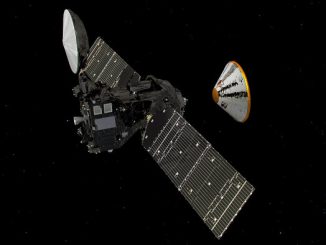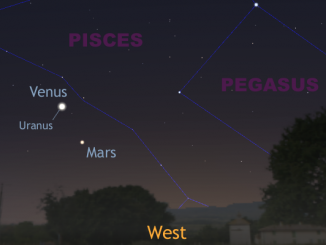A realtime animation of the European Space Agency’s ExoMars Schiaparelli module entering and descending through the atmosphere to land on Mars. The animation starts when the lander enters the atmosphere at an altitude of 121 km at 14:42 GMT. In six minutes it will use a heatshield, parachute and thrusters to brake from 21,000 km/h to a near standstill 2 metres above the surface, where a crushable structure on its underside will absorb the final shock.
23 December 2025
Latest News
- [ 17 December 2025 ] Thank you from the editor News
- [ 25 October 2025 ] Hubble revisits a cosmic yardstick News
- [ 21 October 2025 ] Europe’s planet hunting spacecraft complete and ready for final testing News
- [ 24 September 2025 ] Nova outburst in Centaurus News
- [ 12 September 2025 ] Astronomy Now relaunches digital platform News
© 2019 Pole Star Publications Limited



